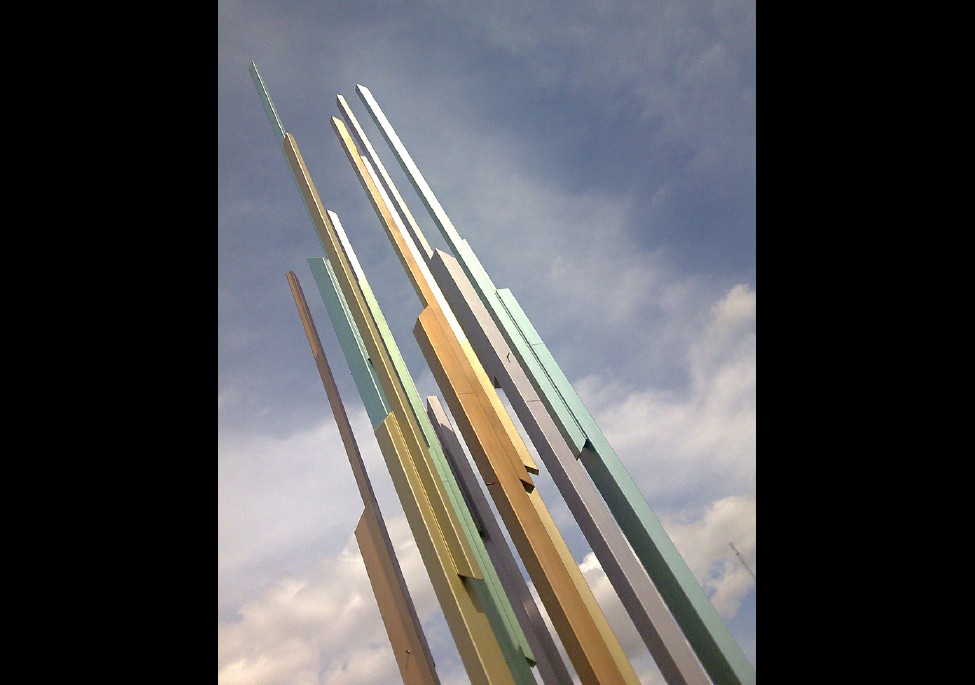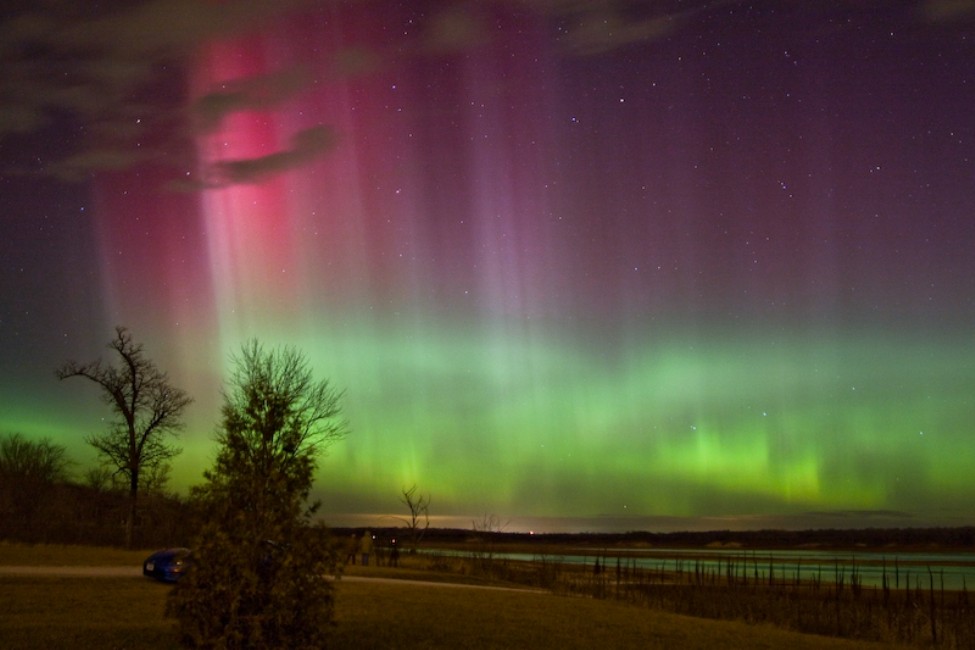
What) This 88 foot tall illuminated steel structure was built in 1999 and is coated with multi-coloured shades of metallic paint. It is dedicated to one of the Northern plains most stunning natural phenomena, the spectacular beauty of the Aurora Borealis. (1)
An aurora is a natural light display in the sky particularly in the high latitude (Arctic and Antarctic) regions, caused by the collision of energetic charged particles with atoms in the high altitude atmosphere. The charged particles originate in the magnetosphere and solar wind and, on Earth, are directed by the Earth's magnetic field into the atmosphere.
In northern latitudes, the effect is known as the aurora borealis (or the northern lights), named after the Roman goddess of dawn, Aurora, and the Greek name for the north wind, Boreas, by Pierre Gassendi in 1621. Auroras seen near the magnetic pole may be high overhead, but from farther away, they illuminate the northern horizon as a greenish glow or sometimes a faint red, as if the Sun were rising from an unusual direction. Discrete aurorae often display magnetic field lines or curtain-like structures, and can change within seconds or glow unchanging for hours, most often in fluorescent green. The aurora borealis most often occurs near the equinoxes (March and September). (2)
Where) East of the junction of Highway 2 and Highway 3
Why)
Although the description sounds great, I did not expect the
tower to even approximate the beauty that I have seen in pictures
and paintings of the northern lights. I put this tower on the
list because I have already done most of the interesting
Buckys in North Dakota on other trips.





